Melting moments: MOCA presents a selection of Gaetano Pesce’s resin-based works
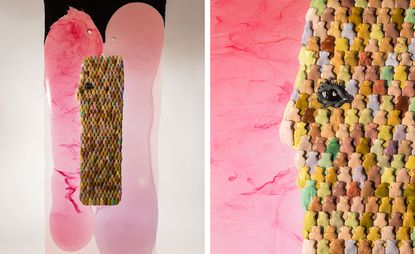
When Gaetano Pesce was studying architecture at the University of Venice in the late 1950s and early 60s, he not only participated in the post-Bauhaus art collective Gruppo N, but also worked in the Venetian factories of the Murano glass powerhouses of Moretti, Vistosi and Venini. While the former gave him a formalist and conceptual tool kit (integrating painting, sculpture, architecture and industrial design into a single practice), the latter helped to expand his notions of materiality, and to lay the foundation for his lifelong obsession with resin.
‘What glass and resin have in common is the timing of transformation from liquid to solid and the process of reaction,’ says Pesce, who was also obsessed with the artistic processes found in the culinary world. ‘The kitchen and the art of cooking had a big influence on me and my work with molds. If you think about it, we need small open sky molds to make cookies or cakes, and that’s the same with my works.’
In the early 1980s, when the artist began working with the translucent material, its chemical composition was different than those seen in today’s high-performance resins. ‘It was sensitive to the light. In other words, the light could have changed the transparency, elasticity and solidity of the resin – I can see in my works of 20 years ago that some of their qualities have changed,’ notes Pesce, who created molds for chairs, vases, and lamps – in addition to two-dimensional cast-resin reliefs, which the artist refers to as ‘industrial skins’.
All of these are being exhibited in the four-decade-spanning 'Gaetano Pesce: Molds (Gelati Misti)', at MOCA Pacific Design Center in Los Angeles. The curiosity about Pesce’s processes by curator Bennett Simpson has resulted in a show that examines the narrative behind ‘mass-produced objects where each one has its own quality while differing from each other – the production of the "aleatory" and not standardised series’, says Pesce. ‘Some of the molds are from the 70s when I asked to myself for the first time, "Why objects must be considered alike when people are different?"’
As such, viewers will find examples of vases resembling manicured trees, mangy hirsute mussels and green flames, as well as industrial skins imprinted with images of feet and pregnant mothers, and a red, white and blue prototype chair that would have felt at home in Tommy Hilfiger’s disco-era bell-bottom boutiques.
‘In the exhibition there [are] many vessels because I have dedicated a lot of time and practice in realising these objects. The reason is that I believe they represent something special and important, maybe the most important being the mother’s womb,’ says Pesce, who also considers maternity a prime expression in his iconic doors. ‘This specific part of the feminine body has been a primary element of most of the ancient civilizations, from Mesopotamians to Greeks and Romans, and the Italian Renaissance. This is my contribution to that important branch of art.’

‘What glass and resin have in common is the timing of transformation from liquid to solid and the process of reaction,’ says Pesce, who was also obsessed with the artistic processes found in the culinary world. Pictured: an industrial skin imprinted with an image of a foot titled Il Piede

The qualities of resin have changed significantly since Pesce began working with the material in the early 80s. Pictured: Cara Madre, featuring the form of a pregnant woman

The exhibition also includes a number of Pesce's vases. Pictured: Vase with Hair

Another of Pesce's resin vessels, Vase Albero, is made to resemble a tree
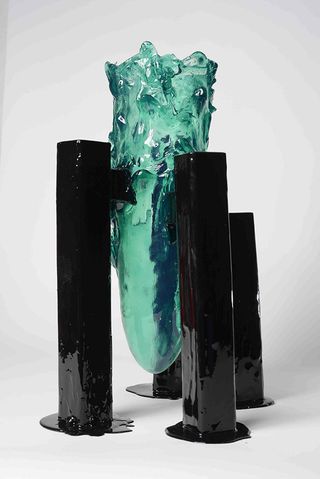
‘In the exhibition there [are] many vessels because I have dedicated a lot of time and practice in realising these objects. The reason is that I believe they represent something special and important,’ says Pesce. Pictured: Green Flame vase

Even the invitations for the exhibition (pictured) were cast in resin form, riffing on the title of the show
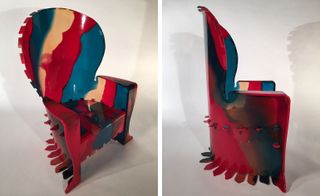
A prototype of a resin chair that mixes red, blue and white together
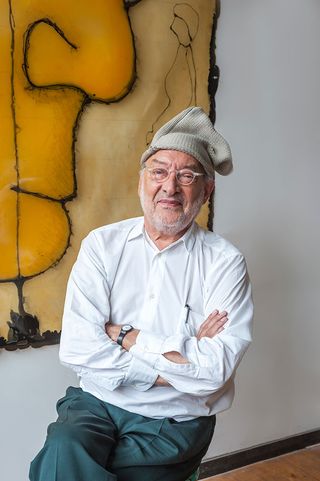
The artist, Gaetano Pesce.
INFORMATION
’Gaetano Pesce: Molds (Gelati Misti)’ is on view from 3 September – 27 November. For more information, visit MOCA’s website
ADDRESS
MOCA Pacific Design Center
8687 Melrose Avenue
West Hollywood, CA 90069
Wallpaper* Newsletter
Receive our daily digest of inspiration, escapism and design stories from around the world direct to your inbox
-
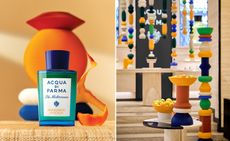 Discover Acqua di Parma’s new Mandarino di Sicilia fragrance at Milan Design Week 2024
Discover Acqua di Parma’s new Mandarino di Sicilia fragrance at Milan Design Week 2024Acqua di Parma and Fornice Objects bring the splendour of Sicilian mandarin fields to Milan to celebrate new fragrance Mandarino di Sicilia
By Simon Mills Published
-
 First look at Samba Room, London’s innovative cocktail lounge packed with Brazilian energy
First look at Samba Room, London’s innovative cocktail lounge packed with Brazilian energyLondon’s Samba Room, an extension of SushiSamba, is a dynamic bar, lounge and private dining space designed by Fabled Studio
By Tianna Williams Published
-
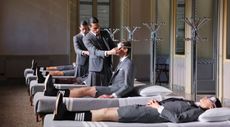 Thom Browne shows how to make the perfect bed with theatrical performance at Milan Design Week 2024
Thom Browne shows how to make the perfect bed with theatrical performance at Milan Design Week 2024American fashion designer Thom Browne makes his Milan Design Week debut with a new homeware collection created in collaboration with historic linen company Frette
By Scarlett Conlon Published
-
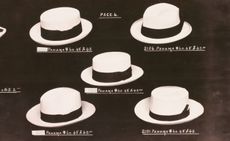 The Met’s ‘The Real Thing: Unpacking Product Photography’ dissects the avant-garde in early advertising
The Met’s ‘The Real Thing: Unpacking Product Photography’ dissects the avant-garde in early advertisingA new exhibition at The Metropolitan Museum of Art in New York explores the role of product photography and advertising in shaping the visual language of modernism
By Zoe Whitfield Published
-
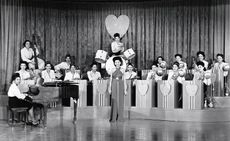 Detroit Institute of Arts celebrates Black cinema
Detroit Institute of Arts celebrates Black cinema‘Regeneration: Black Cinema 1898-1971’ at the Detroit Institute of Arts (DIA) brings lost or forgotten films, filmmakers and performers to a contemporary audience
By Anne Soward Published
-
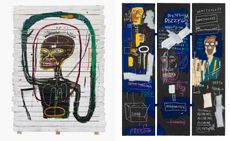 Jean-Michel Basquiat’s LA-made work goes on show at Gagosian
Jean-Michel Basquiat’s LA-made work goes on show at Gagosian‘Made on Market Street’ at Gagosian in Beverly Hills is the first show to present works made by the young artist between 1982 and 1984
By Hunter Drohojowska-Philp Published
-
 BLUM marks 30 years of Japanese contemporary art in America
BLUM marks 30 years of Japanese contemporary art in AmericaBLUM will take ‘Thirty Years: Written with a Splash of Blood’ to its New York space in September 2024, continuing its celebration of Japanese contemporary art in America
By Timothy Anscombe-Bell Published
-
 Todd Gray’s sculptural photography collages defy dimension, linearity and narrative
Todd Gray’s sculptural photography collages defy dimension, linearity and narrativeIn Todd Gray’s New York exhibition, he revisits his 40-year archive, fragmented into elaborated frames that open doors for new readings
By Osman Can Yerebakan Published
-
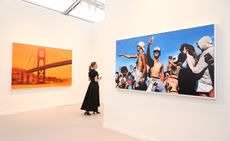 Frieze LA 2024 guide: the art, gossip and buzz
Frieze LA 2024 guide: the art, gossip and buzzOur Frieze LA 2024 guide includes everything you need to know and see in and around the fair
By Renée Reizman Published
-
 What happened when Spike Jonze met Björk
What happened when Spike Jonze met BjörkSpike Jonze’s ‘The Day I Met Björk’, curated by Humberto Leon, is at Arroz & Fun in Los Angeles and accompanied by a free, downloadable zine from WeTransfer
By Hannah Silver Published
-
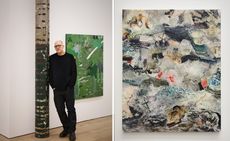 New York artist Christopher Astley showcases an alternative natural world
New York artist Christopher Astley showcases an alternative natural worldAt Martos Gallery in New York, Christopher Astley’s paintings evoke an alternative natural world and the chaos of warfare (until 16 March 2024)
By Tianna Williams Published